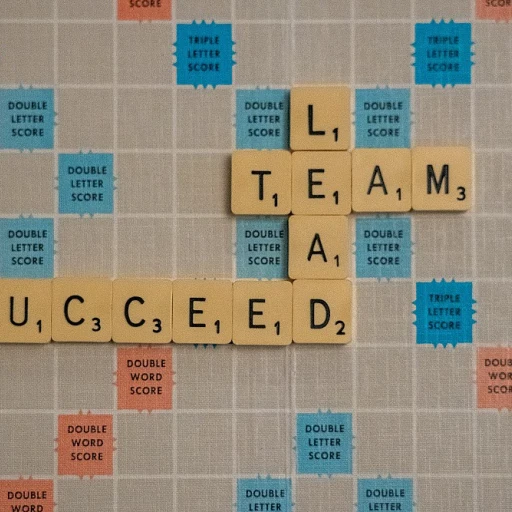
Understanding Coaching in the Workplace
Unpacking Workplace Coaching
Coaching in the workplace serves as a pivotal tool for enhancing employee performance and fostering a positive work environment. Unlike traditional disciplinary methods such as being written up, coaching focuses on guiding employees through their work challenges by offering constructive feedback and tailored support. This personalized approach is key to improving job performance while promoting professional growth and employee retention. Coaches, often part of the management team or specially trained staff members, work collaboratively with employees to address performance issues without resorting to formal corrective actions. By establishing a foundation of trust, employees are more likely to engage in the coaching process, which prioritizes communication, accountability, and mutual respect. Progressive discipline, on the other hand, typically begins with verbal warnings and may escalate to written warnings, corrective action, and even disciplinary actions if performance issues persist. The traditional route can sometimes lead to a negative work atmosphere, possibly affecting staff morale. Coaching, as opposed to these formal mechanisms, allows employees to explore solutions actively and strive for improvement in a supportive environment. This proactive strategy not only addresses specific performance issues sometimes more effectively but also helps avoid the negative implications associated with more stringent disciplinary actions. For organizations aiming to strike a balance between accountability and support, workplace coaching offers a promising path forward. This approach empowers employees, paving the way for a culture centered on development and continuous performance improvement. To delve deeper into creating an inclusive performance management system, consider exploring how peer-inclusive performance appraisals can further enhance employee retention here.The Write-Up Process: A Closer Look
Diving Deeper into the Write-Up Process
In any workplace, addressing performance issues is unavoidable. The write-up process is a method employed by management to formally document an employee's shortcomings. It often involves a written warning, serving as a critical aspect of progressive discipline. This approach ensures that both staff members and supervisors clearly understand the performance expectations and consequences of not meeting them. The write-up process generally follows progressive corrective steps. Initially, an employee might receive verbal coaching or verbal warnings, where specific performance issues are communicated. If the issues persist without improvement, the next stage involves formal corrective action, such as written warnings. This documented feedback becomes part of the employee's record, providing substantial grounds for any future disciplinary actions, should they become necessary. One key benefit of the write-up process is its potential to guide employees toward performance improvement. A written warning or a corrective action plan can often motivate staff to take the necessary steps to enhance their job performance. However, it's essential that such documentation is implemented fairly and consistently across the organization. This consistency in disciplinary actions helps in maintaining transparency and trust within the workplace. While the write-up process is vital in maintaining accountability, it should be balanced with support mechanisms like coaching. Utilizing coaching after a written work warning can help employees better understand and address their performance issues. This progressive corrective action, combined with supportive coaching, can significantly enhance employee performance management and retention.Impact on Employee Morale and Retention
Impact on Employee Wellbeing and Morale
Employee wellbeing and morale are critical aspects of maintaining a productive and harmonious workplace. The distinction between coaching and the write-up process is crucial when evaluating their impact on these elements. Coaching, done properly, aims to support staff members by addressing their performance issues through constructive feedback and personalized mentorship. By focusing on performance improvement rather than punishment, coaching fosters a supportive environment where employees feel valued and motivated to enhance their job performance. This approach helps to build trust between the employee and management and encourages open communication, leading to improved employee performance. In contrast, a written warning, as part of the write-up process, often serves as a formal corrective action that may come across as punitive. While it is sometimes necessary to address serious performance issues, frequent reliance on discipline through written warnings can create a negative atmosphere, potentially leading to decreased morale. It may also instill fear among employees, resulting in disengagement rather than motivation. Using corrective measures such as progressive discipline or verbal warnings should be balanced with supportive processes like coaching. Such a balance ensures that employees are held accountable for their actions while enabling them to feel supported in improving their performance. Management must be cautious with the use of disciplinary actions, as the line between constructive and demotivating feedback is delicate. Moreover, ensuring that the privacy policy is respected during the process of both feedback and discipline is crucial. Employees who feel their privacy is protected are more likely to trust the management, contributing to a positive company culture. When coaching or issuing a written warning, maintaining confidentiality strengthens employee trust and preserves their dignity, impacting overall employee retention positively. Effective strategies that focus on balancing accountability and support can be achieved through successful coaching techniques Implementing Effective Career Development Programs. By prioritizing employee development over punitive action, organizations can significantly enhance morale and retain high-performing talent.When to Use Coaching vs. Write-Ups
Recognizing the Right Time for Each Approach
In understanding the dynamics between coaching and the write-up process at work, one key aspect to consider is timing. Selecting the appropriate method, whether it's coaching or issuing a written warning, depends on the nature and severity of the performance issues at hand. Coaching is generally more effective when dealing with minor performance issues or when an employee, or staff member, shows potential but needs guidance to align with job expectations. This approach fosters a supportive environment, emphasizing growth and improvement through constructive feedback and verbal coaching. It’s beneficial when the aim is to reinforce positive behaviors, boost employee morale, and strengthen the overall employee performance. On the other hand, a written warning, as part of a progressive discipline process, is suitable when an employee fails to meet performance standards after previous verbal warnings or when their actions significantly impact the work environment. This formal corrective action serves as a clear documentation of the issue and establishes a more serious tone in performance management. To decide whether to employ coaching or move forward with a written warning, management should consider the employee's history and the impact of their actions on the team. Coaching might be preferable for employees who demonstrate a willingness to improve, while written warnings are more appropriate for those showing repeated disregard for expectations despite prior feedback. Finding the balance between accountability and support is crucial for creating an effective employee discipline strategy. It's important to maintain a fair and consistent approach, ensuring that all staff members understand the consequences of their actions while also feeling supported in their professional development. This balance can significantly enhance the employee's willingness to improve performance and contribute positively to the work environment.Best Practices for Implementing Coaching
Effective Strategies for Implementing Coaching
Implementing coaching in the workplace is a strategic approach that can significantly enhance employee performance and retention. Here are some best practices to consider:
- Establish Clear Objectives: Before initiating any coaching process, it's crucial to define clear objectives. What specific performance issues or goals are you addressing? Having a clear focus helps both the coach and the employee understand the purpose and expected outcomes.
- Provide Regular Feedback: Continuous feedback is essential in the coaching process. It helps employees understand their progress and areas needing improvement. Regular feedback sessions can prevent minor issues from escalating into major performance problems.
- Create a Supportive Environment: A supportive work environment encourages open communication and trust. Employees should feel comfortable discussing their challenges without fear of immediate disciplinary action. This environment fosters growth and learning.
- Train Managers as Coaches: Not all managers naturally possess coaching skills. Providing training on effective coaching techniques can empower them to guide their teams better. This training should cover how to deliver constructive feedback, set realistic goals, and motivate staff members.
- Document the Process: While coaching is more informal than being written up, it's still important to document the process. This documentation can include the objectives, feedback given, and any agreed-upon action plans. It serves as a reference for both the employee and management.
- Balance Accountability and Support: Coaching should not be confused with leniency. While it focuses on support and development, there should still be accountability for performance improvement. A balanced approach ensures that employees are motivated to meet their job expectations.
By integrating these practices, organizations can create a coaching culture that not only addresses performance issues but also enhances overall employee engagement and retention.
Balancing Accountability and Support
Finding the Right Balance Between Accountability and Support
Creating a workplace culture that effectively balances accountability and support is crucial to fostering employee satisfaction and retention. One approach is to integrate coaching and disciplinary processes, such that each employee feels they have the opportunity to improve within a supportive framework. Achieving this balance between being supportive and holding staff accountable requires management to be clear about their expectations, consistent in their application of discipline, and empathetic in their coaching methods. Here are practical steps for balancing these elements:- Clear Communication: Articulate the objectives for employee performance, along with any behavioral expectations, to remove ambiguity. Regular feedback sessions are vital to this process, ensuring alignment on goals and identifying performance issues before they necessitate corrective action.
- Empathetic Listening: Employees are more receptive to feedback when they feel understood. During coaching sessions, give staff the opportunity to express their challenges and concerns. This dynamic approach helps in crafting personalized development plans.
- Consistent Process: Management should apply progressive discipline and corrective actions consistently across the board. This approach ensures fairness and helps in differentiating legitimate performance issues from occasional lapses.
- Positive Reinforcement: Recognize improvements, no matter how small. Add value to verbal coaching by celebrating progress, even if it involves correcting past written warnings. Positive reinforcement motivates employees to continue enhancing their performance rather than focus solely on past infractions.
- Confidentiality and Respect: Address performance issues privately and maintain a privacy policy that safeguards employees' dignity. This fosters trust between the staff and management, creating an environment conducive to open communication.












